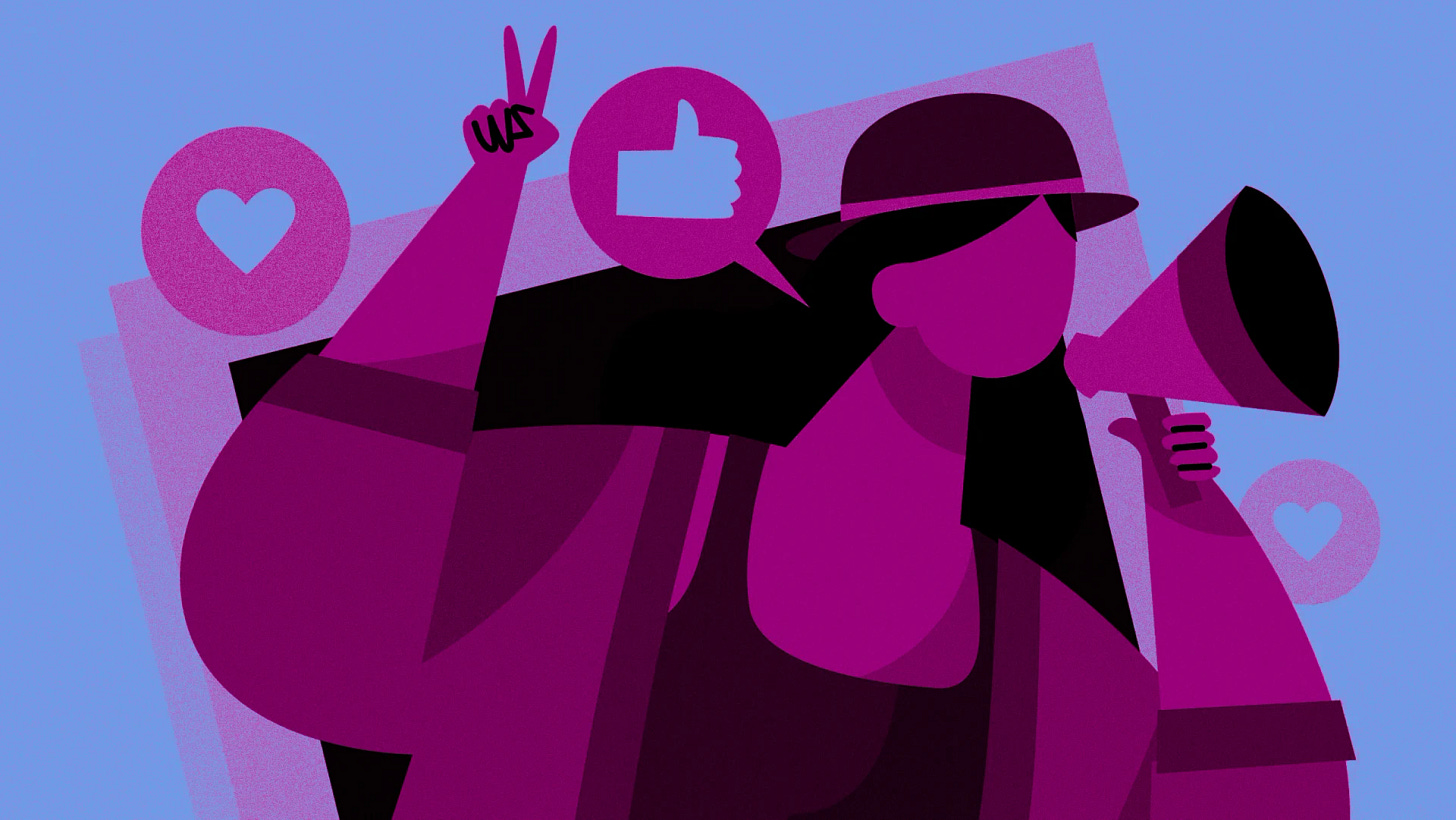Keep scrolling for a breakdown of the new FYP update.
Even Netflix is jealous of YouTube
YouTube is winning the streaming race, and they are miles ahead of the competition. In an article for Vulture, Josef Adalian provides a glimpse into the ‘streaming wars’ — which are evidently being dominated by YouTube.
Initially, YouTube was dismissed as a genuine competitor by the more traditional television streaming platforms. However, this opinion has shifted over time.
Adalian revealed, “In April, the Google-owned platform accounted for a record 12.4 percent share of all TV viewing, far ahead of Netflix (7.5 percent), which took second place among streamers.”
When YouTube launched YouTube TV in 2017, it offered access to mainstream TV channels without the need for cable at a cheaper rate. By early 2024, it has become the third largest cable network in North America.
Netflix has been making moves to respond to the threat YouTube poses. We have seen a recent movement toward drawing creators to the streaming service. From Ms. Rachel to Mr Beast — Netflix is throwing money at some of YouTube’s powerhouses in order to remain competitive.
“Although streamers grabbing talent from YouTube is hardly new, the size and frequency of such deals are growing — as is their upside: Ms. Rachel, MrBeast, and Hinchcliffe have all scored massive hits for their new platforms”
But even with this competition, it seems YouTube isn’t going anywhere. The platform has been quick to jump on new and trending modes of media. From mimicking TikTok’s style in ‘shorts’ to becoming the biggest platform for streaming podcasts (above Spotify and Apple), it seems YouTube has found a sweet-spot.
Read the full article via Vulture.
The Internet Is Dead—and You Killed It
The internet has become a graveyard. A place that once glowed with promise has become a wasteland, a dying ecosystem of content. Evan Robertson mourns what the internet once was (and all that it could’ve been) in a piece for Vice.
The “old internet” seemed to be a purposeful place filled with community. When it first emerged, users gained access to more people and information than ever before. We have since entered into what Robertson refers to as the ‘scrolling 20s’ and suddenly, the internet changed.
“Community was replaced with content. The search for something new was replaced with never-ending sludge.”
This demise seems to go hand-in-hand with the rise of AI. Entirely antithetical to why the internet was created in the first place, AI has dramatically shifted the landscape online. Users, instead of seeking out information, now consume whatever our algorithms feed us which has significant consequences on society.
“Students don’t know how to research things anymore—it’s a skill that has fallen to the wayside, like writing in cursive or reading an analog clock. Even worse, teachers are using ChatGPT to write their class syllabi. The slop is rolling downhill, quickly, right on top of us.”
These algorithms have become dangerous. As platforms like TikTok and Instagram pour out a never-ending stream of content, users are constantly receiving dopamine hits and instant gratification.
“The internet is no longer built for exploration. It’s designed to make you scroll… forever.”
While the dead internet theory has circulated for years now, it seems we may finally be experiencing it.
Read the full story via Vice.
Time to “control your scroll” on TikTok
Speaking of scrolling, TikTok has launched some new features designed to give users more autonomy over their in-app experience. These features focus on promoting healthy usage of the app while encouraging people and families stay safe online.
The FYP on TikTok is evolving for the better. The app has introduced the “Manage Topics” feature, which allows users to dial up, or down, how much they want a particular topic to appear. With the algorithm greatly influencing the content that appears, this feature will give users more control over their experience.
“These settings wont eliminate topics entirely but can influence how often they’re recommended as peoples’ interests evolve over time.”
For further protection, TikTok is strengthening the exisiting “smart keyword filters”. This allows users to include up to 200 keywords of things they don’t want to see. Through the utilisation of AI, TikTok will do its best to filter out anything the user requests.
Finally, the unwinding feature. The app will encourage users to switch-off at 10pm, through an in-app guided meditation. When a user is scrolling late at night, they will be prompted to complete a meditation exercise.
“These features are designed to reflect best practices in behavioural change theory by providing positive nudges that can help people develop balanced long-term habits. In our testing, 98% of teens kept the meditation experience switched on and parents who want to block their teens' use of TikTok at night can use Family Pairing,” notes the company.
Read the full report via TikTok Newsroom.
As we enter into another era of economic uncertainty, the prospect of joining the workforce seems intimidating for many high school graduates. After the enduring consequences of the pandemic disrupted education globally, many high school graduates feel unprepared for post-school challenges. Sarah Bregel explains how this is pressuring young adults to lean into influencer culture in a piece for Fast Company.
A survey commissioned by K12 asked 200 parents and 300 recent high school graduates about their confidence entering the real world after high school. The results were jarring, with only 32% expressing confidence in how their high school equiped them for the real world.
The survey noted that the main areas of concern for recent grads were making and managing their own money, living independently and understanding how to communicate effectively.
Bregel noted this is “perhaps a display of how online communication has peaked in recent years in lieu of in-person communication.”
It seems money and financial security are the enduring concerns. With schools ineffectively equipping students with the life skills needed to navigate the challenging job market and financial uncertainty, it’s expected they are turning to something more familiar.
“More than a third, or 34% said they felt pressure from social media to become content creators or entrepreneurs, which is hardly surprising given just how common the side gig, or even full-time career, has become,” she writes.
When the influencer lifestyle is glamourised to be flexible and profitable, it makes perfect sense that teens view it as an accessible career path. Although it can be lucrative, the greater concern should lie in the lack of financial literacy taught to high schoolers. Once they begin to earn money they will be unequipped to manage their income, unaware of the benefits of savings and investing.
Many young grads are scared to enter the real world, and honestly, who can blame them?
Read the full piece via Fast Company.
The cult and community of Labubu
Move over Sonny Angels, there’s a new collectable toy dominating our FYPs. The character, called Labubu, comes from the China-based toy brand Pop Mart. A furry creature with big eyes and pointy teeth, Labubus are quickly reaching icon status. In a piece for Mashable, Crystal Bell explores the cult and community of Labubu, and how it’s become a symbol of status for collectors.
In the last few months, Labubu has become the darling of TikTok. #Labubu has amassed tens of millions of views, turning the once niche character into a worldwide obsession.
These collectables — which come inside a blind box — have sparked mania among the general public. New drops sell out in seconds and resell prices are sky-rocketing on third party websites.
"Labubu is currently Pop Mart's top-selling IP in the U.S. and one of the strongest globally. In 2024 alone, Labubu generated more than $419 million USD, outperforming all other IPs in the company’s catalog,” explains Bell.
While it isn’t the first of its kind to generate attention online (there were Squishmellows and Sonny Angels before Labubu) the difference in Labubu exists because of how she explicitly functions as a status symbol.
As the trend grows, people have begun using their Labubu as a fashion accessory. Whether it be her major presence at New York Fashion Week or attached to Birkins, Labubu has become an acquirable and more affordable symbol of status.
“Labubu fits into a broader shift called the ‘lipstick effect’: the idea that when times are tough, people seek out small luxuries instead of splurging on big-ticket items. A $20 toy that makes you smile suddenly feels like a reasonable indulgence,” Bell argues.
But more than this, Labubu connects collectors to their inner child. Unlike most status symbols, Labubu possesses a playful nostalgia that mimics plush toys, provoking feelings of comfort.
Labubu’s rise reflects more than just a viral trend — it captures the emotional complexity of consumerism. In a time where the curation of our identity online often feels fleeting, owning a Labubu is about reclaiming joy. Whether clipped to a luxury handbag or placed on a shelf, Labubu is a reminder that even in adulthood, whimsy still has value.
Read the full story via Mashable.








